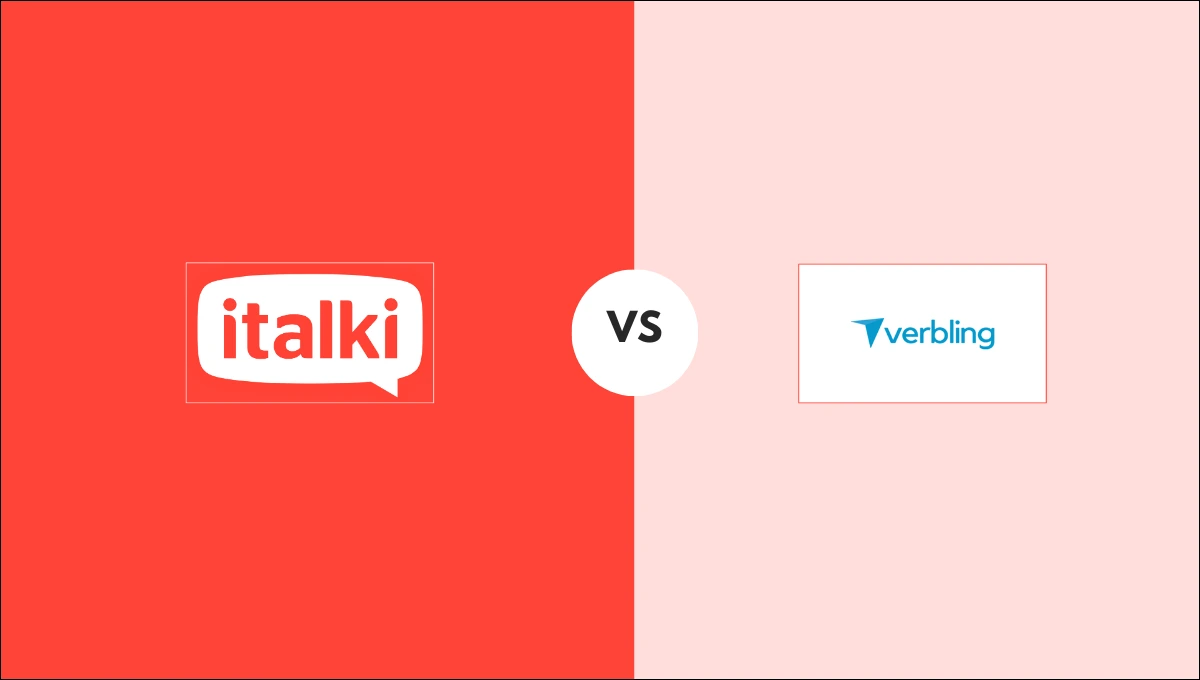In Spanish, the present perfect is used to discuss experiences or events relevant to the present. Today, we’ll talk about the present perfect Spanish tense, which you can use to describe your incredible travel experiences. The good thing about this tense is that it is very similar to English.

Present perfect Spanish tense: What is it, and how is it formed?
The present perfect in Spanish is a compound tense. This means it’s a tense composed of two verbs: an auxiliary verb and a main verb. The present perfect in Spanish can be used to discuss past actions or events somehow related to the present. Let’s take a closer look at how it is formed:
The present tense in Spanish is one of what we refer to as “the easy tenses” because it is used in particular situations, is simple to conjugate, and shares striking similarities with English.
The basic formula for conjugating is: Haber (in present simple) + past participle
For example:
- Ella ha comido la manzana. (She has eaten the apple.)
- Yo he estudiado por tres horas. (I have studied for three hours.)
Conjugating Haber in simple present tense
We’ll start by learning haber conjugation in the simple present tense and then move on to the past participle.
| Pronoun | Conjugation | Meaning |
| Yo | He | I have |
| Tú | Has | You have |
| Él/Ella/Usted | Ha | He/she has, you (formal singular) have |
| Ellos/Ellas/Ustedes | Han | They/you (formal plural) have |
| Nosotros | Hemos | We have |
| Vosotros | Habéis | You have (informal plural) |
Conjugating the Past Participle
Here’s a quick guideline on how to conjugate the past participle:
- Verbs ending in -ar change their ending to -ado
- Verbs ending in -er and -ir change their ending to –ido
| Verb Type | Past Participle Ending | Example |
| -ar | -ado | Cantar (to sing) → Cantado (sung) |
| -er | -ido | Comer (to eat) → Comido (eaten) |
| -ir | -ido | Venir (to come) → Venido (come) |

Grammar rules for Spanish present perfect
There are a couple of minor details you should know about the present perfect tense:
- Never separate haber and the past participle. This is one of the primary differences between Spanish and English in the present perfect tense. You cannot add a word to the tense and break it apart. For example, if you want to say “I have never drunk alcohol in my life”:
Correct: Nunca he bebido alcohol en mi vida.
Incorrect: He nunca bebido alcohol en mi vida
- Pronouns are always used before the present perfect, not after. For instance, consider “I have already told them the truth”:
Correct: Ya les he dicho la verdad.
Incorrect: Ya he dicho les la verdad.
The more you use and hear the present perfect, the more natural these rules seem. Make sure you get plenty of practice with native speakers and consume Spanish content whenever you can. Remember, it is essential to learn Spanish grammar to talk and write like locals. Excessive practice will help you memorize these grammar tricks naturally.

When to use Spanish present perfect tense
Below are the scenarios where you are required to use Spanish present perfect tense:
Recent actions with current consequences
When a previous action has a direct impact on the present, the present perfect is required. The present perfect is most commonly used in Spain, as Latin America prefers the preterite in such cases.
- Hemos comprado una casa. (We have bought a house.)
Action that started in the past but continues
Decisions you’ve made in the past have a significant impact on your current life, such as jobs you took, promotions you received, moves to a new location, beginning a new language learning journey, and so on. These require the present perfect and are comparable to the present perfect continuous in English.
- He sido profesor de idiomas desde 2002. (I have been a language teacher since 2002.)
Taking about previous life situations
We frequently discuss past experiences, and in Spanish, we use the present perfect. You can use the present perfect to express how many times something has happened in your life or whether or not you have ever done something.
- He oído que se ha casado cinco veces ya. (I have heard he has been married five times already.)
With Trigger words
Some words and expressions prompt the use of the present perfect tense, which means that when you see these words, the present perfect is usually followed. The words that trigger the present perfect are:
| Trigger Word | Meaning | Example |
| Nunca | Never | No hemos visto esa película nunca. (We have never watched that movie.) |
| Últimamente | Recently, lately | Ellos han estado trabajando últimamente. (They have been working lately.) |
| … veces | …times | Ya te lo he dicho tres veces. (I have already told you three times.) |
| Hoy | Today | Hoy he desayunado cereal con leche. (I ate cereal with milk for breakfast today.) |
| Esta mañana / esta tarde / esta noche | This morning/afternoon/tonight | He comido mucho esta noche. (I have eaten a lot tonight.) |
| Esta semana / este mes / este año | This week, this month, this year | Esta semana no he podido trabajar. (I have not been able to work this week.) |
| Ya | Already | Ya hemos llegado a casa. (We have already arrived home.) |
| Aún | Yet | No he decidido qué hacer aún. (I have not decided what to do yet.) |
| Todavía | Still | No hemos pagado las facturas todavía. (We have still not paid the bills yet.) |
| En mi vida | In my life | En mi vida he hablado con él. (I have never talked to him in my life.) |
The present perfect is an easy tense that we use daily in many contexts and situations. If you want professional guidance, getting a conversational Spanish tutor from italki can prove to be your best learning choice. Let’s discuss how this platform is ideal for learning Spanish.
Master Spanish language with italki
This online language-learning platform is ideal for becoming fluent in Spanish. There are numerous reasons why italki is unique. Some of the leading causes are:
Tailored lesson plans: Learning Spanish is much easier when you have lesson plans that are tailored to your specific learning goals and needs. italki offers personalized learning sessions to help you learn Spanish online. These sessions will help you identify your learning objectives and goals.
Experienced Spanish tutors: italki’s tutors are mostly native speakers. You can choose a private Spanish tutor from a list of experienced and professional teachers who offer Spanish classes online, based on your preferred learning schedule and budget. These teachers will create personalized learning plans based on your specific needs.

Find Your Perfect Teacher
At italki, you can find your Spanish tutor from all qualified and experienced teachers. Now experience the excellent language learning journey!
Book a trial lesson
Schedule flexibility: This amazing platform recognizes people’s hectic schedules and strives for maximum flexibility. You can schedule your lessons at times that are convenient for you.
Interactive learning method: The interactive method allows you to fully engage with your Spanish tutor. The conversational learning style enhances the engagement and enjoyment of learning. You can choose the best learning format based on your objectives and goals.

How do I book my lesson with italki?
Go to italki. Fill out your profile with all of the necessary information. To find a Spanish teacher, select the ‘Find a teacher’ option and apply the Spanish teacher filter. Choose a teacher who is an excellent fit for your learning objectives and requirements. Plan your lessons.
It is strongly recommended that you conform to the additional material, exercises, and scenario-based content provided by your Spanish tutor. Accept constructive criticism and work on improving your weaknesses.
Frequently asked questions
How is the Present Perfect formed in Spanish?
To form the Present Perfect, use the present tense of the auxiliary verb “haber” followed by the past participle of the main verb. For example, “He comido” (I have eaten).
When should I use the Present Perfect in Spanish?
Use the Present Perfect when emphasizing the result or consequences of a past action that are still relevant in the present. It is also used for experiences, changes, or actions that occurred at an unspecified time in the past.
Can you provide examples of regular verbs in the Present Perfect?
For regular verbs, the past participle is formed by replacing the -ar ending with -ado and the -er/-ir endings with -ido. For example, “hablar” becomes “hablado,” and “vivir” becomes “vivido.”
How are irregular verbs conjugated in the Present Perfect?
Irregular verbs have unique past participle forms. For instance, “abrir” becomes “abierto,” and “decir” becomes “dicho.” It’s essential to memorize irregular past participles for accurate usage.
Conclusion
The Present Perfect tense in Spanish adds depth and precision to our ability to express actions that have been completed in the past with a connection to the present. By using the auxiliary verb “haber” and the past participle, speakers can convey not just when an action occurred, but also emphasize its relevance or consequences in the current moment.
If you want to master Spanish grammar, check out italki to book grammar lessons with one of the experienced Spanish tutors available on the list. Start the learning journey today to achieve your desired learning goal.
Want to learn a language at italki?
Here are the best resources for you!



















